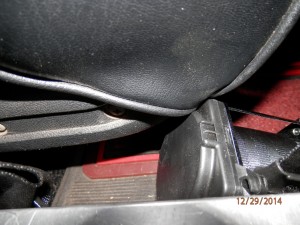P-51 whirligig — overkill
This is definitely on the overkill side. 1/7 scale P-51 built from cedar to be covered with 0.010″ aluminum. Needed to stretch the creativity brain-cells.
This is definitely on the overkill side. 1/7 scale P-51 built from cedar to be covered with 0.010″ aluminum. Needed to stretch the creativity brain-cells.
Recently my Nexus 7 tablet refused to boot up into Android 5.1.1. It appears the flash memory developed some kind of unrecoverable error. I found a refurbished motherboard on ebay through Ascendtech list as “ASUS NEXUS 7″ ME571K SERIES 32GB TABLET MOTHERBOARD 60NK0080-MB2700 31YF2MB00E0”. Yesterday, Mason was able to install this in maybe 20 minutes. Most difficult part is getting the case open and fussing with the cables and connectors that disconnect in somewhat non-obvious ways. One screw was covered with a piece of round tape so it didn’t look like a screw.
Now it is like a brand-new device again, and updated to Android 6.0.
Issues:
Stale ubuntu packages created problems and were difficult to remove because one wanted to remove over 1,000 packages. The commands to fix this were lost from the history buffer.
Nvidia X11 would not start due to due to some new ABI feature. Most reliable fix seems to be to downgrade:
dnf –showduplicates –allowerasing –releasever=22 downgrade xorg-x11-server-Xorg
No real issues with this upgrade. I found that the problem with mounting my raid partitions at boot was due to using the wrong format in my /etc/fstab file. Instead of /dev/mapper I needed to use UUID= to specify the partitions. I extracted the UUID values using blkid.
2-Jan-2015:
Nothing is ever as easy or straightforward as it should be for me. The stock seat belts in 69 Mustangs are a complicated 2-belt affair, with separate lap and shoulder belts. This was the first year Ford installed shoulder belts in the Mustang. I thought it was time for an upgrade to a modern style 3-point belt with the inertia lock retractor mechanism. The Scott Drake version has buckles that are very close to the original style, so it looks appropriate, even if slightly less convenient to operate.
Everything seemed to work well until I moved the seat all the way back – which is necessary for me. The seat interferes with the retractor as can be seen in the photo below. The only solution I can think of is to move the mounting point rearward, which won’t be trivial since the rocker panel is effectively a closed tube and structural member of the unibody.

14-March-2015:
I relocated the mount for the retractor using a bracket I welded up. I had to cut a hole in the inner rocker panel to fish it back into position. I pop-riveted the bracket in place and welded the hole back up.